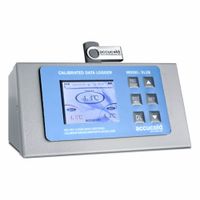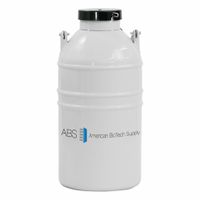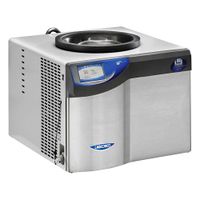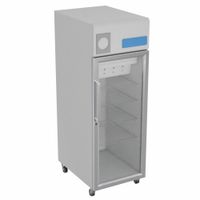Call +(254) 703 030 000 / 751 483 999 / 721 704 777
- Home
- Lab Supplies
- Lab Cooling Refrigeration
.....Read More
Frequently Asked Questions
What is the ideal temperature range for storing chemicals in a lab refrigerator?
The ideal temperature range for storing chemicals in a lab refrigerator is typically between 2°C and 8°C (36°F and 46°F). This range is crucial for maintaining the stability, integrity, and safety of various chemical reagents, samples, and biological materials. Temperatures outside this range can lead to degradation, contamination, or altered reactivity of the stored substances, potentially compromising experimental results or leading to hazardous situations.
However, it's vital to note that specific chemicals may have unique storage requirements that deviate from this general range. For instance, some highly volatile or sensitive chemicals may require lower temperatures, such as those found in ultra-low freezers (-20°C to -80°C), while others might be safely stored at room temperature. Always refer to the Safety Data Sheet (SDS) for each specific chemical, which provides detailed information on proper storage conditions, including recommended temperature ranges, ventilation requirements, and any incompatibilities with other substances. Regular monitoring of refrigerator temperatures using calibrated thermometers and maintaining proper inventory management are also essential practices for chemical storage safety.
How do lab freezers differ from regular freezers?
Lab freezers differ from regular freezers primarily in their precision, temperature range, and specialized features designed for scientific research and sample preservation. Regular freezers, like those found in homes, are typically designed for general food storage, maintaining temperatures around 0°F (-18°C) to prevent spoilage.
Lab freezers, on the other hand, offer much lower and more stable temperatures, often reaching -20°C, -40°C, -80°C, or even -150°C (ultralow temperature freezers, or ULTs). This precise temperature control is crucial for preserving biological samples, reagents, and other sensitive materials without degradation. They also feature advanced insulation, robust cooling systems, and often incorporate alarms for temperature deviations, battery backups, and secure locking mechanisms to protect valuable samples. Furthermore, lab freezers are built with materials resistant to corrosive chemicals and are designed for easy cleaning and sterilization, adhering to strict laboratory safety and quality standards.
What are the benefits of using a lab chiller for equipment cooling?
Lab chillers offer several key benefits for equipment cooling. They provide precise temperature control, which is crucial for sensitive lab instruments and experiments that require stable thermal environments. By actively circulating a cooled fluid, chillers efficiently dissipate heat generated by equipment, preventing overheating that can lead to damage, malfunctions, and reduced lifespan. This consistent cooling also ensures optimal performance and accuracy of equipment, as many scientific processes are highly temperature-dependent. Furthermore, using a chiller can be more environmentally friendly and cost-effective than single-pass cooling systems, as they recirculate the cooling fluid, reducing water consumption and associated utility costs. They also offer a closed-loop system, minimizing contamination risks and ensuring a clean cooling medium for delicate equipment.
How does a freeze dryer work to preserve samples?
A freeze dryer works by freezing the sample, then reducing the surrounding pressure and adding enough heat to allow the frozen water in the sample to sublimate directly from the solid phase to the gas phase. This process, called lyophilization, effectively removes moisture without significant heat, preserving the sample's structure, biological activity, and chemical composition. The low temperature and pressure prevent denaturation and degradation that can occur with other drying methods.
What safety features should be considered for lab refrigeration equipment?
When considering lab refrigeration equipment, several safety features are crucial to protect samples, personnel, and the laboratory environment. Temperature alarms, both audible and visual, are essential for indicating deviations from set points, preventing sample degradation due to temperature excursions. These alarms often include high/low temperature limits and power failure alerts.
Another important feature is a secure locking mechanism to prevent unauthorized access to valuable or sensitive samples, ensuring chain of custody and data integrity. Self-closing doors and magnetic gaskets are vital for maintaining internal temperature stability and reducing energy consumption, while also preventing accidental door ajar situations that could compromise samples.
For equipment storing flammable or volatile chemicals, spark-free interiors are mandatory to eliminate ignition sources. This includes fan motors, light switches, and internal wiring. Additionally, robust construction with durable, corrosion-resistant materials is important for longevity and to prevent leaks, especially when storing potentially hazardous liquids. Integrated data logging capabilities or ports for external data loggers allow for continuous monitoring and record-keeping, which is critical for regulatory compliance and quality assurance. Emergency stop buttons and readily accessible power disconnects also provide quick shutdown options in case of a malfunction or emergency.
How do cryogenic storage systems maintain ultralow temperatures?
Cryogenic storage systems maintain ultralow temperatures, often below -150°C, primarily through the use of highly insulated vessels and cryorefrigerants. These systems are designed to minimize heat transfer from the surroundings into the stored samples.
One key component is the vacuum-insulated dewar or tank. This creates a vacuum space between an inner and outer wall, which significantly reduces heat transfer by conduction and convection. Some systems may also incorporate multiple layers of reflective material within the vacuum space to block radiant heat, similar to a thermos.
The ultralow temperatures are achieved and maintained by storing substances in direct contact with, or in the vapor phase above, cryorefrigerants. The most common cryorefrigerant is liquid nitrogen (LN2), which has a boiling point of -196°C. LN2 absorbs heat from the stored materials as it slowly vaporizes, thus keeping the temperature consistently low. For even lower temperatures, or for specific applications, liquid helium may be used.
Advanced cryogenic storage systems often include active cooling mechanisms, such as mechanical cryocoolers, which use compressed gases and expansion cycles to achieve and maintain low temperatures without the constant consumption of cryorefrigerants, though these are typically more complex and costly. Temperature monitoring systems and alarms are also crucial to ensure the integrity of the stored samples by alerting users to any temperature fluctuations.
What are the best practices for organizing samples in cold storage racks and boxes?
Best practices for organizing samples in cold storage racks and boxes include: * **Standardized Labeling:** Use clear, consistent, and durable labels that include essential information such as sample ID, date, contents, and researcher. Barcodes can enhance efficiency and reduce errors.
* **Logical Hierarchy:** Implement a hierarchical system, e.g., facility \> freezer \> rack \> box \> well. This allows for quick location of samples.
* **Color-Coding:** Utilize different colored boxes or labels for various sample types, projects, or research groups to provide a visual aid for organization.
* **Detailed Inventory System:** Maintain an accurate digital inventory (e.g., LIMS) that mirrors the physical organization. This should track sample location, quantity, and freeze/thaw cycles.
* **Segregation by Type and Risk:** Separate samples based on their type (e.g., DNA, RNA, protein, cells) and biohazard level to prevent cross-contamination and ensure safety.
* **Fill from Top to Bottom, Left to Right:** When filling boxes, maintain a consistent pattern to avoid empty spaces that can lead to disorganization.
* **Designated Empty Spaces:** Keep some empty spaces for new incoming samples or for samples that need temporary storage.
* **Regular Audits:** Periodically check the physical inventory against the digital record to identify and correct discrepancies.
* **Training:** Ensure all users are trained on the established organization and labeling protocols.
How can unauthorized access to lab cold storage be prevented?
Preventing unauthorized access to lab cold storage is crucial for maintaining sample integrity, security, and regulatory compliance. Several measures can be implemented to achieve this.
Firstly, physical security is paramount. This includes secure locks on freezers and refrigerators, ideally with key card access or biometric scanners for controlled entry. The cold storage area itself should be in a restricted zone with limited access. Surveillance cameras can deter unauthorized entry and provide a record in case of incidents.
Secondly, access control systems are essential. Implementing a tiered access system where only authorized personnel have access to specific storage units or areas helps limit potential breaches. Regular review of access logs can identify suspicious activity. User authentication, such as unique IDs and strong passwords for any connected inventory management systems, adds another layer of security.
Thirdly, inventory management systems play a vital role. A robust system that tracks every sample in and out of storage, including details like who accessed it and when, helps maintain accountability. Barcoding or RFID tagging samples can improve tracking accuracy and reduce human error.
Finally, administrative controls are equally important. This includes establishing clear written policies and procedures for cold storage access, sample handling, and incident reporting. Regular training for all personnel on these procedures and security protocols is necessary. Additionally, conducting periodic audits of the cold storage system and inventory can help identify vulnerabilities and ensure compliance. By combining these physical, technological, and administrative measures, laboratories can significantly reduce the risk of unauthorized access to their valuable cold storage.
What maintenance is required for lab refrigeration and cooling equipment?
Regular maintenance for lab refrigeration and cooling equipment is crucial for optimal performance, energy efficiency, and extended lifespan. Key tasks include:1. Cleaning: Regularly clean condensers and evaporators to prevent dust and debris buildup, which can hinder heat exchange. Clean the interior of the units to maintain a sterile environment and prevent contamination.
2. Temperature Monitoring: Continuously monitor and log temperatures to ensure they remain within the specified range. Any fluctuations could indicate a problem.
3. Door Seals and Gaskets: Inspect door seals and gaskets for cracks or wear. Damaged seals can lead to air leaks, increased energy consumption, and temperature instability. Replace them if necessary.
4. Calibration: Periodically calibrate temperature sensors and controllers to ensure accuracy.
5. Defrosting: For manual defrost freezers, regularly defrost accumulated ice to maintain efficiency and prevent damage.
6. Ventilation: Ensure adequate airflow around the equipment by keeping vents clear and avoiding obstruction.
7. Compressor Checks: Listen for unusual noises from the compressor, which could indicate a mechanical issue.
8. Professional Servicing: Schedule routine professional maintenance, typically annually, for thorough inspections, refrigerant level checks, and addressing any complex issues.Adhering to these maintenance practices helps prevent costly breakdowns, ensures the integrity of stored samples, and supports reliable lab operations.
How do you choose the right refrigeration system for specific lab applications?
Choosing the right refrigeration system for specific lab applications involves considering several critical factors to ensure optimal performance, sample integrity, and energy efficiency.
First, temperature range and stability are paramount. Different lab applications require varying temperatures, from standard cold rooms (2-8°C) to ultra-low freezers (-80°C) or even cryogenic freezers (-150°C to -196°C). The system must maintain consistent and precise temperatures, often with alarm systems for deviations.
Second, sample volume and type influence capacity and storage format. Large volumes may necessitate walk-in cold rooms or freezers, while smaller, sensitive samples might require specialized upright or chest freezers with features like multiple compartments or inventory management systems. The type of sample (e.g., biological materials, chemicals, reagents) can also dictate specific features like explosion-proof interiors for flammable substances or humidity control.
Third, energy efficiency and environmental impact are increasingly important. Labs should look for systems with energy-saving features, such as variable speed compressors, efficient insulation, and eco-friendly refrigerants, to reduce operational costs and carbon footprint.
Fourth, space availability and ventilation must be assessed. The physical footprint of the unit, along with clearance for proper airflow and heat dissipation, is crucial for efficient operation and to prevent overheating.
Finally, reliability, redundancy, and monitoring capabilities are vital for critical lab applications. Systems should offer robust construction, often with backup cooling systems or redundant compressors, to minimize the risk of sample loss due to equipment failure. Integrated monitoring systems with remote alerts are essential for continuous oversight and immediate response to any issues. Maintenance and service availability also play a role in long-term operational success.





